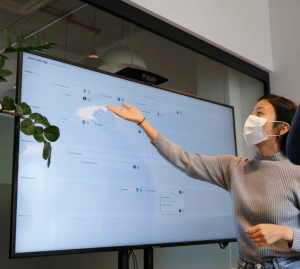Vendors, Here’s What Employers Want to Know from You
Earlier this year, Catalyst for Payment Reform brought a group of purchasers together to strategize how to increase member engagement in high-value programs. We focused on direct-to-employer digital health products and used the experience to distill best practices on how employers can maximize uptake of a product or point solution.
With many more products in the market, and with purchasers wanting to learn more tips for achieving strong engagement, CPR hosted a second purchaser roundtable in June 2021, supported by Peterson Center on Healthcare and sponsored by DarioHealth. Unlike our first roundtable which featured purchaser presenters, this event invited vendors to present a case study about one of their purchaser clients.
CPR has a long history of bringing the employer perspective to other purchasers. Whether it’s during our past collaboratives, our live events, or through our written case studies, we’ve heard from purchasers that they value hearing from their peers the most. But, vendors are certainly capable of telling compelling stories on behalf of a purchaser client, especially if they put themselves in the purchaser’s shoes when planning their presentation.
In this blog post, we offer best practices for vendors preparing for “case study” presentations in the direct-to-employer context.
First of all, why case studies? Case studies are empirical inquiries that investigate a phenomenon in a real-world context. They can be used early in the implementation of a value-oriented strategy to identify potential challenges and the likelihood of a strategy’s success, or they can assess a hypothesis about a value-oriented strategy’s impact on intended outcomes. A good case study is developed through semi-structured interviews with key informants.
So, what does this mean for vendor presentations? The strongest case study presentations focus on the stories of real-life purchasers who have implemented the vendor’s product. The presentations cover the purchaser’s challenges, results, and how the program will impact the purchaser’s future strategies. Most of all, it’s important that the purchaser’s voice shines through the vendor’s presentation.
Let’s breakdown the best practices and components that comprise a successful case study presentation:
The presenter: CPR has found that the most effective presenters are the account managers for the purchaser clients. While directors of sales can make the case and know the program, it’s the account managers that bring the on-the-ground experience – the next best thing to the purchaser voice.
The presentation: Case study-based presentations should contain the following types of content and structure:
- A brief orientation to the vendor’s company and their product or program.
- An introduction to the employer-purchaser on whose behalf the vendor is presenting. For instance, is the purchaser a public or private purchaser? Where is the purchaser located? What are the key demographics among its member population? What is the purchaser’s overall approach to its benefits strategy?
- The challenge – why did the employer-purchaser approach the vendor seeking its support? What specific health care challenge(s) was the purchaser facing?
- A description of the program and the implementation process from the purchaser’s point of view. This should include the program design and key elements, how the program meets the purchaser’s unique needs, any complementary benefit design details that the purchaser used to drive engagement, the provider payment strategy, and a detailed look at the rollout and operations processes (including communications to plan members).
- Program results – are there any results or insights to share? A vendor should show both successes and areas for improvement (experienced purchasers can always tell when a vendor is cherry-picking results). The vendor should also highlight next steps for the purchaser and its program.
- The “80/20 Rule” – not all of these elements should be weighed equally in a given presentation. Generally, the sections focused on the “description of the program” and the “program results” should be weighed the most heavily and make up most of the presentation. That said, for vendors that are new to the market and/or have a particularly unique product, it may behoove them to spend a little more time upfront orienting the audience to its solution before diving into the case study. When presenting on a purchaser case study, a good practice is to use the 80-20 rule. Eighty percent of a vendor’s presentation should be about the purchaser and its experience, while 20 percent should be an orientation to the vendor and its product.
The audience: Participant feedback is essential to helping vendors understand whether they are truly delivering the right content to the purchaser audience. Providing feedback only takes a few minutes and it’s valuable insight for a vendor’s future presentations.
The host: When vendors, as opposed to purchasers, are presenting, it is the responsibility of the host to remove “pay-to-play” situations or other conflicts of interest. The focus should remain on the needs of the audience and the content of the presentations. For instance, the host should avoid making sponsorship, or another type of payment, a requirement for being able to present. By removing sponsorship as a barrier-to-entry, the host opens the door for emerging vendors, who have compelling stories but limited budgets, to get in front of employers, and for employers to stay on top of new products.
The bottom line is that all stakeholders involved have a role to play in ensuring a successful roundtable. What are some other best practices for roundtables? Cast your vote and join the discussion on LinkedIn.
Photo by AirFocus on Unsplash.

